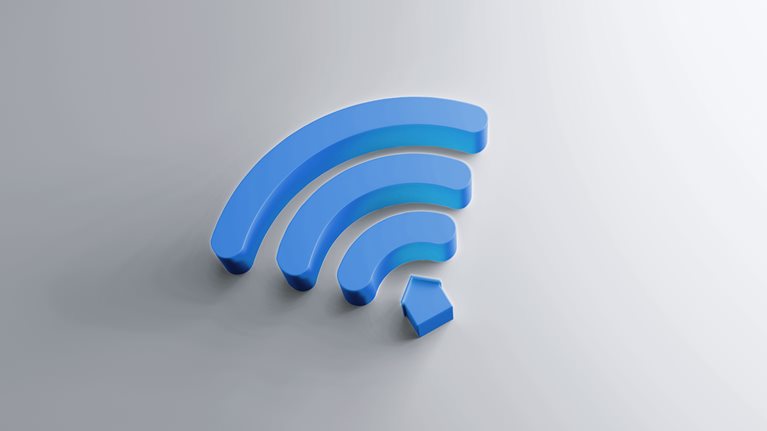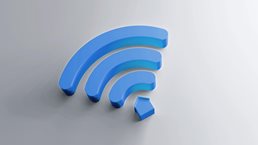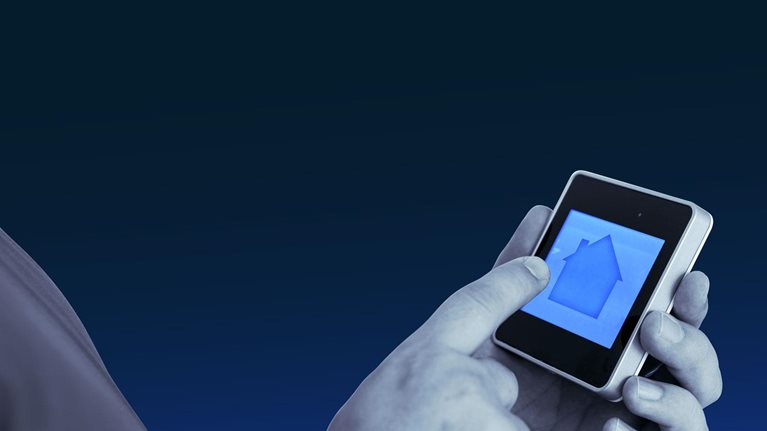
Does your house have a smart thermostat? Or maybe you’re one of the one in three Americans who wears a fitness tracker to help you stay physically active. If you do, you are tapping into the Internet of Things, or IoT. It’s become embedded in our lives, as well as in the way organizations operate.
Get to know and directly engage with senior McKinsey experts on the Internet of Things.
Cindy Levy is a senior partner in McKinsey’s London office; Enno de Boer is a senior partner in the New Jersey office; Gérard Richter is a senior partner in the Frankfurt office; Mark Patel is a senior partner in the Bay Area office; and Matteo Mancini is a senior partner in the Riyadh office.
IoT uses a variety of technologies to connect the digital and physical worlds. Physical objects can be embedded with sensors and actuators. Sensors monitor things like temperature or motion, or really any change in environment. Actuators receive signals from sensors and then react to the reported changes. Sensors and actuators communicate with computing systems via wired (for example, Ethernet) or wireless (for example, Wi-Fi or cellular) networks; these computers can monitor or manage the health and actions of connected objects and machines.
The constant connectivity that IoT enables, combined with data and analytics, provides new opportunities for companies to innovate products and services, as well as to increase operational efficiency. Indeed, IoT has emerged as one of today’s most significant trends in the digital transformation of business and economies. Challenges abound, particularly when it comes to IoT cybersecurity, but we estimate the total value potential for the IoT ecosystem could reach $12.6 trillion by 2030.
What is an IoT device?
An IoT device is any object that has sensors and actuators embedded within it that communicate to an external network. Broadly, IoT devices are used in the following nine fields:
- Human bodies. Devices can be attached to or implanted in the human body, including wearable or ingestible devices that monitor or maintain health and wellness, assist in managing diseases such as diabetes, and more.
- Homes. Homeowners can install devices such as home voice assistants, automated vacuum cleaners, or security systems.
- Retail environments. Devices can be installed in stores, banks, restaurants, and arenas to facilitate self-checkout, extend in-store offers, or help optimize inventory.
- Offices. IoT applications in offices could entail energy management or security for buildings.
- Standardized production environments. In such settings, including manufacturing plants, hospitals, or farms, IoT applications are usually aimed at increasing operating efficiencies or optimizing equipment use.
- Custom production environments. In customized settings, like those in mining, construction, or oil and gas exploration and production, IoT applications might be used in predictive maintenance or health and safety efforts.
- Vehicles. IoT can help with condition-based maintenance, usage-based design, or presales analytics for cars and trucks, ships, airplanes, and trains.
- Cities. IoT applications can be used for adaptive traffic control, smart meters, environmental monitoring, or managing resources.
- Outside. In urban environments or other outdoor settings, such as railroad tracks, autonomous vehicles, or flight navigation, IoT applications could involve real-time routing, connected navigation, or shipment tracking.
Other real-world examples abound. IoT solutions are being used in a wide variety of settings: in refrigerators, to help restaurants optimize their food compliance processes; in fields and farms, to track livestock; in offices, to track how many and how often meeting rooms are used; and more.

Looking for direct answers to other complex questions?
Learn more about our Digital McKinsey, Technology, Media & Telecommunications, and Industrials & Electronics Practices.
What is the economic potential of IoT?
The potential value of IoT is large and growing. By 2030, we estimate it could amount to up to $12.5 trillion globally. That includes the value captured by consumers and customers of IoT products and services.
The potential economic value of IoT varies by usage context. IoT applications in factories and in human health contexts represent outsize shares of this total. IoT in factories alone could generate up to $3.3 trillion by 2030, or just over a quarter of the total value potential. IoT economic impact in human health settings could reach about one sixth of the total estimated value.
Another way of looking at IoT’s value is to explore use case clusters, or similar uses adapted to different settings. The following common use cases account for a sizable share of IoT’s potential economic value:
- optimizing operations, or making the various day-to-day management of assets and people more efficient (41 percent)
- healthcare applications (15 percent)
- human productivity (15 percent)
- condition-based maintenance (12 percent)
Other clusters include sales enablement, energy management, autonomous vehicles (the fastest-growing cluster), and safety and security.
What are IoT platforms?
To get value from IoT, it helps to have a platform to create and manage applications, to run analytics, and to store and secure your data. Essentially, these platforms do a lot of things in the background to make life easier and less expensive for developers, managers, and users. They handle issues like connecting and extracting data from many different end points, which might be in inconvenient locations with spotty connectivity.
Which IoT platform you select should depend on what your company is trying to achieve with IoT. Here are five things to consider when evaluating IoT platforms:
- Applications environment. Here, you might examine questions like: Can the platform develop, test, and maintain multiple applications? Can it connect easily to the applications my company already uses?
- Data management. It’s helpful to understand if the platform can structure and join multiple unfamiliar data sets, for example.
- Ownership of cloud infrastructure. Does the infrastructure provider own and operate its own data centers, or which public cloud provider does it use? (See “What is cloud computing?” for more on this topic.)
- Security. What commercial-grade authentication, encryption, and monitoring capabilities does the platform have, and are they distinctive?
- Edge processing and control. Here, you could examine whether the platform can do edge analytics without first bringing data into the cloud, or whether it can be easily configured to control local assets without human intervention.
What are the key factors for a seamless IoT experience?
A seamless IoT experience meets the following six requirements, spanning enterprise and consumer use cases:
- Hyperconnected. Connectivity is seamless across a vast number of devices and sensors sharing data.
- Integrated. Integration within and across networks of devices is effortless, with simultaneous use of multiple connectivity standards, platforms, and back-end systems.
- Secure and trusted. Dynamic cybersecurity enables a high degree of trust in handling the multilayered complexity of both new and legacy solutions.
- Intelligent. Devices and systems have the intelligence—enabled by AI and machine learning—to draw insights from data and make real-time decisions. This allows for a leap from monitored to automated implementation.
- Mobile. Devices and networks require minimal maintenance, are battery efficient, and have a persona to allow for futuristic experiences.
- Hyperpersonalized. There are personalized experiences across platforms and scenarios.
What should I know about IoT security?
The billions of IoT devices in use have naturally created new vulnerabilities for companies. As more “things” get connected, the number of ways to attack them mushrooms. Pre-IoT, a large corporate network might have had 50,000 to 500,000 endpoints vulnerable to attack; IoT may involve a network with millions or tens of millions of these endpoints. In the 2022 McKinsey B2B IoT Survey, IoT solution suppliers and buyers ranked cybersecurity as the top impediment to IoT adoption.
Overcoming the cybersecurity obstacle may be the determining factor in whether IoT will be able to transition to a truly integrated network—and achieve its massive value potential.
It’s important to address customer privacy concerns vis-à-vis connected devices. But managing IoT cybersecurity is also about protecting critical equipment, such as pacemakers or entire manufacturing plants—which, if attacked, could put customers’ health or companies’ production capabilities at risk.
Six recommendations can help CEOs and other leaders tackle IoT cybersecurity:
- understand what IoT security means for your industry and business model
- set clear roles and responsibilities for IoT security in your supply chain
- hold strategic conversations with other industry players, including regulators
- prioritize cybersecurity for the entire product life cycle
- transform mindsets and skills
- create a point-of-contact system for external security researchers and implement a postbreach response plan
Learn more about our Digital McKinsey, Technology, Media & Telecommunications, Risk & Resilience, and People & Organizational Practices.
What is IIoT?
The Industrial Internet of Things, or IIoT, is among the advanced manufacturing technologies collectively referred to as Industry 4.0, or the Fourth Industrial Revolution.
What are some benefits of IIoT technologies? They can drastically reduce downtime, open up new business models, and improve customer experiences—and they can also make organizations more resilient. In the COVID-19 era, for example, digital management tools and constant connectivity allowed some companies to quickly respond to market changes by adjusting production capacity and simultaneously supporting remote operations.
Companies using IIoT for digital transformation in manufacturing can follow seven guideposts to align their business, organization, and technology spheres to reap the full benefits from IIoT:
- Business
- identify and prioritize use cases
- focus on plant rollout and enablement
- Organization
- monitor change and performance management
- build capabilities and embrace new ways of working
- Technology
- attend to IIoT and data infrastructure, with a focus on core platform design and cybersecurity
- choose an IIoT cloud platform
- monitor the tech ecosystem
What could affect IoT adoption?
When it comes to getting more value from IoT, there are tailwinds as well as headwinds that will affect IoT adoption.
Three factors could accelerate the adoption and impact of IoT solutions:
- Perceived value proposition. Customers see value in IoT and the way it enables digital transformation and sustainability efforts.
- Technology. Affordable technology, which enables IoT deployments at scale, exists for the vast majority of IoT applications. Progress in hardware can be coupled with developments in analytics, AI, and machine learning, which can enable more granular insights and faster decision making.
- Networks. These are the backbone of IoT, and higher-performing 4G and 5G networks are now available to more people.
Conversely, a variety of factors could constrain adoption. These include the need for new avenues of collaboration across functions, interoperability issues, and installation challenges, as well as concerns about cybersecurity and individual privacy.
If your organization is just getting started, it can be helpful to consider what could accelerate enterprise IoT journeys. In a McKinsey interview, Wienke Giezeman, a serial tech entrepreneur and initiator of The Things Network, offers insight on what can drive action: “We’ve seen this in the industry again and again—you cannot solve IoT problems with money. It’s so tempting to try to solve these problems with cash, but really, it’s the creativity and pushing for simplicity that leads to the solution.”
Learn more about our Digital McKinsey, Technology, Media & Telecommunications, and Operations Practices.
How can IoT efforts be scaled?
To really see the benefits of IoT, companies should embrace the technology at scale, rather than make one-off efforts. If your organization is adopting IoT, here are seven useful actions for scaling IoT:
- Decide who owns IoT in the organization
- Design for scale from the start
- Don’t dip your toe in the water—deploying multiple use cases can be a forcing mechanism in transforming operating models, workflows, and processes
- Invest in technical talent
- Change the entire organization, not just the IT function
- Push for interoperability
- Proactively shape your environment by building and controlling IoT ecosystems
For more in-depth exploration of these topics, see McKinsey’s Insights on the Internet of Things. Learn more about IoT consulting—and check out IoT-related job opportunities if you’re interested in working at McKinsey.
Articles referenced:
- “Cloud-powered technologies for sustainability,” November 9, 2023, Bernardo Betley, Tommaso Cariati, Fan Gao, Eric Hannon, Cindy Levy, Francesco Parente, and Julyeon Seo
- “Cybersecurity for the IoT: How trust can unlock value,” April 7, 2023, Jeffrey Caso, Zina Cole, Mark Patel, and Wendy Zhu
- “IoT comes of age,” March 7, 2022, Michael Chui and Mark Collins
- “IoT value set to accelerate through 2030: Where and how to capture it,” November 9, 2021, Michael Chui, Mark Collins, and Mark Patel
- “A manufacturer’s guide to scaling Industrial IoT,” February 5, 2021, Andreas Behrendt, Enno de Boer, Tarek Kasah, Bodo Koerber, Niko Mohr, and Gérard Richter
- “Industry 4.0 adoption with the right focus,” October 21, 2021, Matteo Mancini, Gustavo Marteletti, Alpesh Patel, Laura Requeno, and Tingfeng Ye
This article was updated in May 2024; it was originally published in August 2022.


